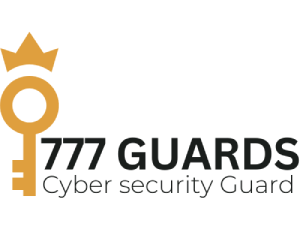In an era where businesses rely heavily on digital infrastructure, the risk of cyber attacks looms larger than ever. Employees, often the frontline defenders against these threats, play a crucial role in maintaining the cybersecurity posture of an organization. This article explores the importance of protecting employees from cyber attacks, offering insights into key strategies that empower them to be vigilant, informed, and resilient against evolving digital threats.
Safeguarding Employees from Cyber Attacks
- Cybersecurity Education and Training:
- Cybersecurity education is the first line of defense. Employees must be equipped with the knowledge and skills to recognize and respond to potential cyber threats.
- Strategies: Conduct regular cybersecurity training sessions, provide resources on identifying phishing attempts, and keep employees informed about the latest cyber threats.
- Phishing Awareness Programs:
- Phishing remains a prevalent and effective method used by cybercriminals. Employees should be adept at recognizing phishing emails and other social engineering tactics.
- Strategies: Implement simulated phishing exercises, educate employees on common phishing indicators, and encourage a cautious approach to unsolicited emails.
- Secure Password Practices:
- Weak or compromised passwords are a significant vulnerability. Promoting secure password practices is essential for preventing unauthorized access.
- Strategies: Enforce strong password policies, encourage the use of password managers, and mandate regular password updates.
- Multi-Factor Authentication (MFA):
- MFA adds an extra layer of security by requiring multiple forms of identification. This significantly reduces the risk of unauthorized access, even if passwords are compromised.
- Strategies: Enable MFA for all applicable systems and accounts, creating an additional barrier against unauthorized access.
- Regular Software Updates:
- Cyber attackers often exploit vulnerabilities in outdated software. Keeping all software, including operating systems and applications, up to date is crucial for closing potential entry points.
- Strategies: Implement automatic updates where possible, conduct regular vulnerability assessments, and promptly apply patches to address known vulnerabilities.
- Safe Web Browsing Practices:
- Unsafe browsing habits can expose employees and their organizations to various cyber threats. Educating employees on safe web practices is crucial for maintaining a secure digital environment.
- Strategies: Implement web filtering tools, educate employees on recognizing malicious websites, and discourage the use of unsecured public Wi-Fi networks.
- Remote Work Security Measures:
- With the rise of remote work, ensuring the security of remote environments is paramount. Employees need guidance on securing their home networks and devices.
- Strategies: Provide secure remote access solutions, offer VPN services, and educate employees on securing home Wi-Fi networks.
- Incident Response Training:
- Despite preventive measures, incidents may still occur. Employees should be trained on the proper response procedures to minimize the impact of a cyber attack.
- Strategies: Develop and communicate an incident response plan, conduct regular drills, and establish clear communication channels for reporting incidents.
Protecting employees from cyber attacks is a collaborative effort that involves education, training, and a culture of cybersecurity awareness. By empowering employees with the knowledge and tools to recognize and respond to cyber threats, organizations strengthen their overall cybersecurity posture. In the ever-evolving landscape of digital threats, employees become not only the targets but also the defenders, contributing to the resilience and security of the entire organization. As businesses continue to navigate the digital frontier, prioritizing employee protection from cyber attacks is a strategic imperative for sustained success and resilience in the face of an ever-changing threat landscape.



